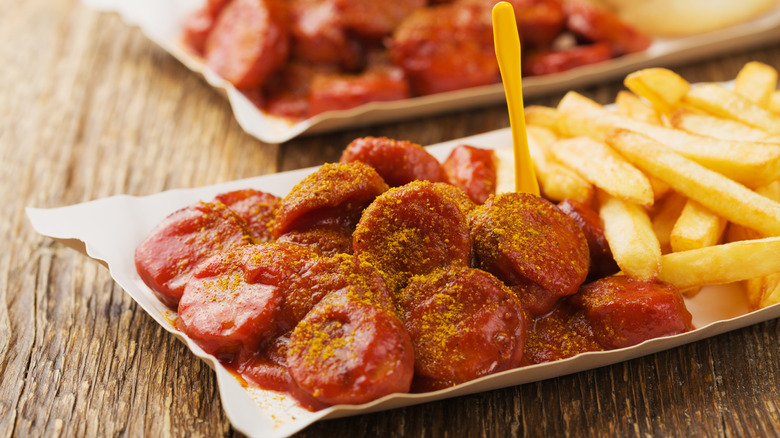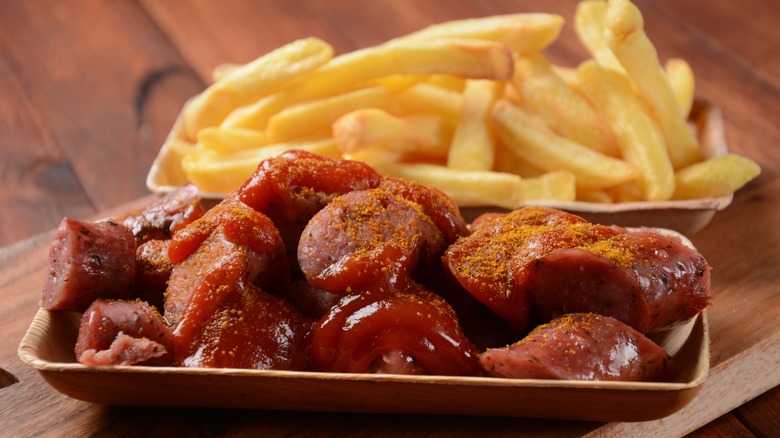The Post-War Origin Of Berlin's Popular Currywurst
Berlin has long been a city defined by intercultural exchange, where the common language is English, the most popular street food is Turkish, and, during its decades-long run, the local airport was a remnant of French military presence.
This meshing of cultures is largely due to the occupation of Berlin after World War II, when the Allied powers — the United States, Great Britain, France, and the Soviet Union — split the city into four sectors.
This period produced the unique vibe that sets Berlin apart from the rest of Germany. One of the notable introductions during this time is the street food known as currywurst. Made from sliced sausages covered in a mix of ketchup and curry powder, this dish seems like an unlikely entry into the German food scene. Though it has more of a local reputation as fodder for tourists these days, it has survived the ravages of time, thanks to its presence at late-night döner kebab stands — where club kids go for a bite after their revelries.
While currywurst might seem like it should be a part of a fast food stunt campaign, this unconventional union of frankfurters and curry has a surprisingly salient history.
Who invented currywurst?
In 1949, a German woman by the name of Herta Heuwer traded with some of the British soldiers during the Allied occupation to get ketchup and curry powder. She added these two ingredients to sausages, unwittingly fathering a trend that would long outlive her. Ketchup made its way to Germany through American soldiers looking to have a taste of home. Meanwhile, curry powder, a British invention inspired by the flavors of Indian cuisine, was a favorite of British soldiers who brought it over. Together, they became the infamous Currysoße (currysauce), a sticky condiment often perked up with a varied list of ingredients that can include anything from orange juice to Coca-Cola. Heuwer began selling currywurst from a stand in Berlin in 1949, and patented her personal "Chillup" sauce in 1959. She took this recipe to her grave — no one knows what was in the original version.
The history of currywurst was once kept alive by the Deutsches Currywurst Museum, which operated in the heart of Berlin from 2009 until 2018. In addition to telling the story of Frau Heuwer, the museum included artifacts like currywurst-themed furniture and ketchup bottle speakers playing songs about the popular street food. Though the museum may be gone, currywurst lives on, and will likely continue to perplex generations of tourists to Berlin for years to come — a lasting symbol of post-war resourcefulness and culinary fusion under the most unusual of circumstances.

